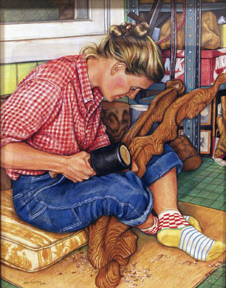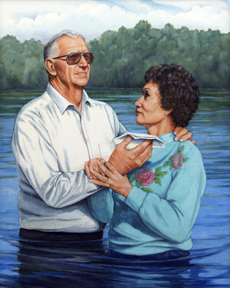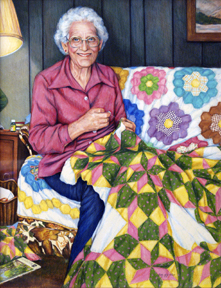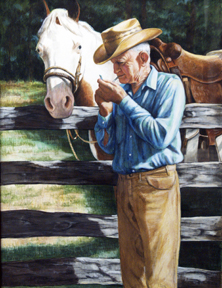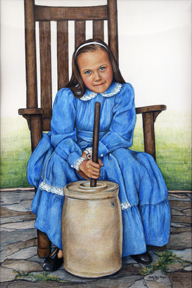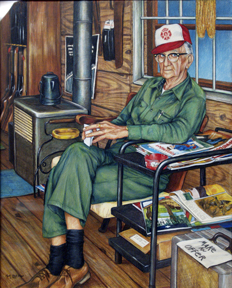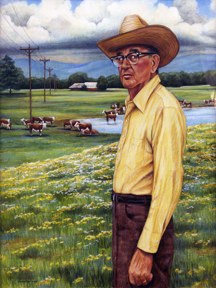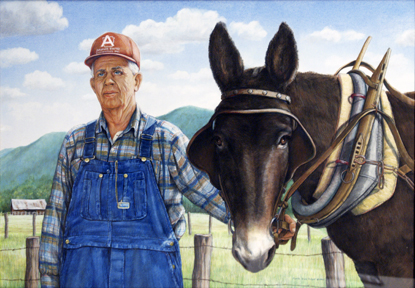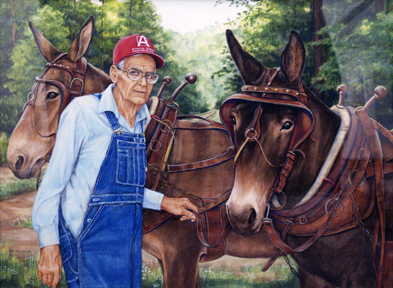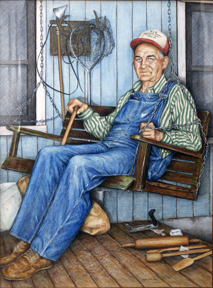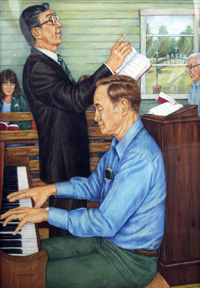A Ouachita Portrait - Monta Black Philpot
A picture is said to be worth a thousand words, but to portrait artist Monta Black Philpot of Mena, Arkansas, a portrait is an opportunity to tell a person's story. In “A Ouachita Portrait,” currently showing in Mullins Library, Philpot tells the story of her home community, piece by piece and person by person.
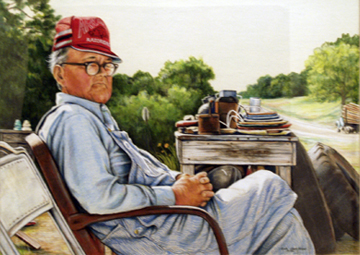
Philpot's series of paintings began with the desire to catalog persons whose personalities color the landscapes in and around Polk County, Arkansas. She chose subjects who represent the spirit and character of the region and focused each portrait on the subject's everyday life and special skills. Philpot said she thought it important to capture images of these skills and the people who practice them before they disappear from the Ouachitas.
Many of the portraits reflect persons engaged in traditional vocations and handicrafts, the expertise and secrets of which are almost faded from contemporary memory, such as a logger with his mule, a water witch (one who dowses for water with a divining rod), a whittler of kitchen utensils and a baker of “the most delicious homemade bread you have ever tasted,” according to Philpot.
In the exhibit, Philpot provides a brief description to accompany each painting that explains the significance of the setting for the portrait's subject. For instance, John L. Faulkner, who served on the boards of directors at Rich Mountain Electric Cooperative and the Arkansas Electric Cooperatives, Inc., for over thirty years, and who was chiefly responsible for bringing electricity to rural Polk County, is depicted standing in a pasture bordered by a line of electrical poles and lines vanishing into the far distance. Philpot ends her description of Faulkner with the statement that rural electricity brought about “one of the greatest economic and lifestyle impacts in the Ouachita Mountains.”
“George 'Pete' Lewey was once a legend at Casey's Shop and Swap,' opens another of the portrait descriptions, which accompanies a portrait of an older man in green coveralls comfortably seated by a heater in a wood-paneled shop. Philpot's description adds that Lewey “spent most of his days talking to tourists when they stopped by to look for antiques at Casey's,” where his “ability to tell stories of the 'good old days'” contributed to his legendary status.
To create her portraits, Philpot uses an unusual technique-she draws using Prismacolor pencil, then blends the colors by applying paint thinner with a brush. The result is a brilliantly-colored, smoothly-finished, realistic portrait, exact in details of setting.
Born in Texas, Philpot attended Southern Methodist University, Southwest Texas State University, Del Mar College, and received her degree in art from Texas A & M University. She currently teaches private art classes in Mena.
“A Ouachita Portrait' has been shown throughout the state in numerous exhibits as well as at the Gilcrease Museum in Tulsa, Okla., and at the Russell Senate Rotunda in Washington, D. C. Arkansas Educational Television Network (AETN) created a documentary feature about Philpot's “A Ouachita Portrait” for their Arkansas Traveler series. Her art has been featured in publications such as Southwest Art, Country America, Country Woman, Modern Maturity and Rural Arkansas.
(Click thumbnail image to enlarge.)


